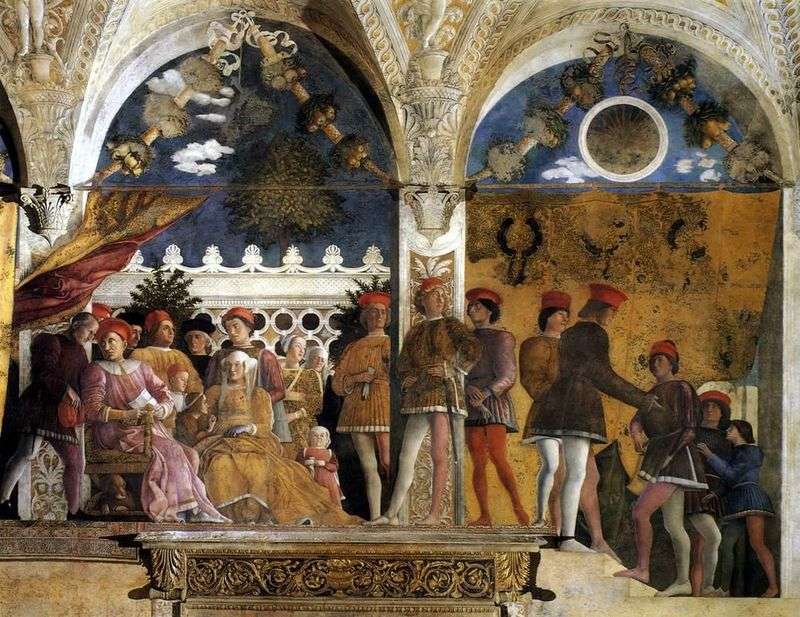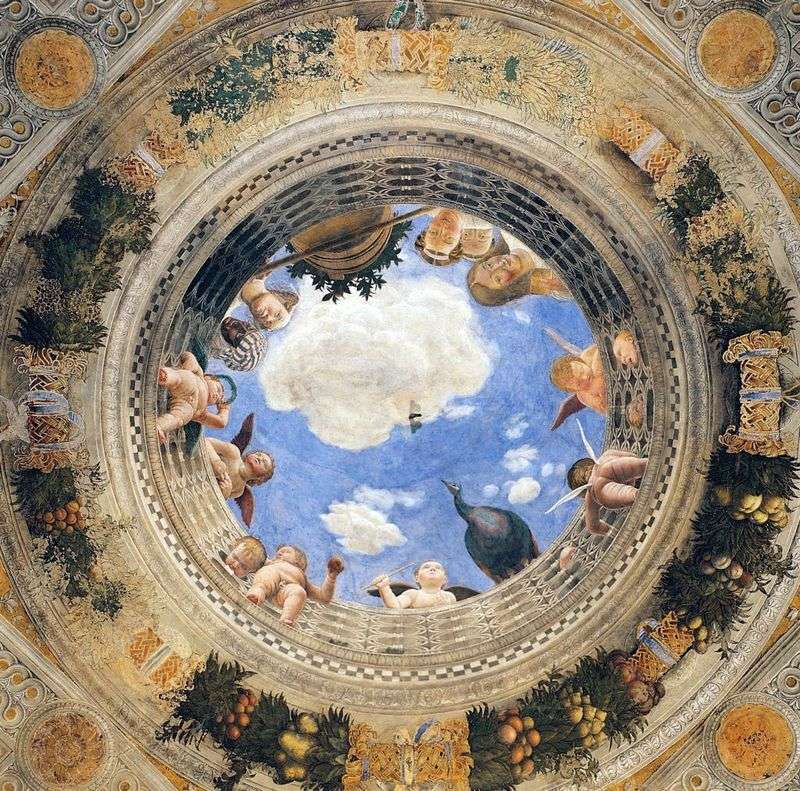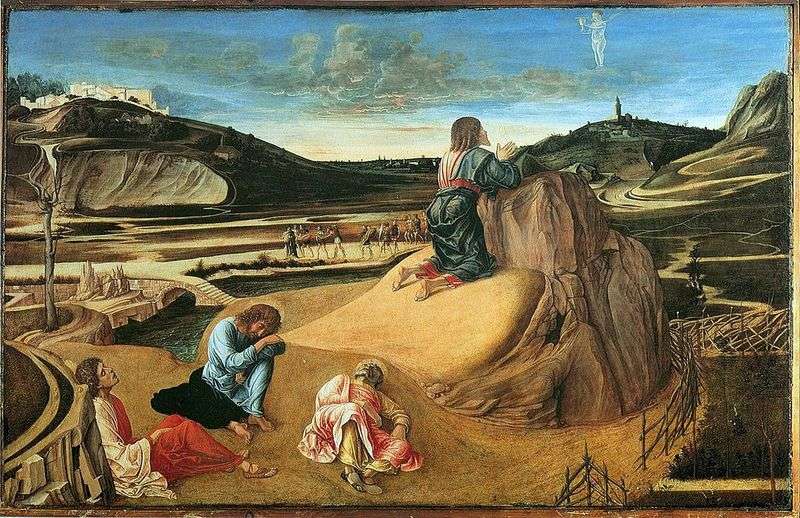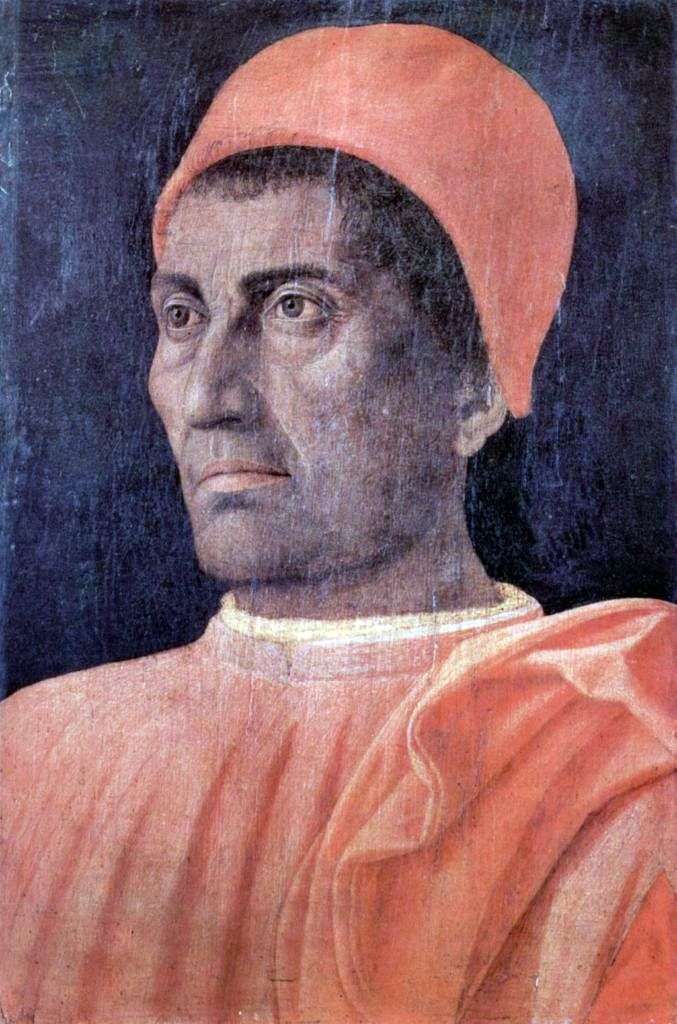
One of the works characteristic of Mantegna is the Praying for the Bowl. The traditional biblical story – the appearance of five angels to Christ – is conveyed here in a special pictorial manner, rigidly and pedantically related to details. In the foreground of the canvas, the three apostles sleep peacefully, while Jude is already leading the soldiers sent by the Sanhedrin to the Savior. The background to all the action is the city created by the artist’s imagination. The landscape of the area seems unreal, but it is also transmitted with high accuracy.
In the Padua church, which was located near the chapel, painted by Giotto, Mantegna performed a fresco cycle based on the legend of St. James. During World War II, the church was badly damaged by bombing and the frescoes of Mantegna were significantly damaged. This was a great loss for art, since the frescoes were undoubtedly among the greatest works of world painting.
On one of the frescoes, which is now preserved only in reproductions and copies, St. Jacob was depicted, led by convoy to the place of execution. When depicting mythological scenes, Mantegna always sought to convey the event as if it really happened, this is what distinguishes his manner from the artistic methods of such artists as Donatello or Giotto. In an effort to display the episode on his canvas, Mantegna not only watched the development of events, but also tried to imagine how people would behave in a similar situation.
Saint James, according to legend, lived during the time of the Roman emperors, which is why the artist recreated the environment characteristic of that era in his work. The sketches that Mantegna made from ancient originals helped him to convey these times with accuracy. Thus, the gate through which the convoy leads St. James, depicted in the form of a Roman triumphal arch, and the artist soldier soldier in armor of Roman legionnaires.
The spirit of the Roman monumentality convey not only costumes and architectural ornaments, but also the composition of the frescoes. Mantegna seems to be directing her; he hopes to further clarify the course and meaning of the depicted moment. Therefore, the plot of the picture can be understood without difficulty: the dark procession suddenly stopped; The reason for the delay was a young soldier who, repenting, rushed to the feet of Jacob and asked for his blessings. A saint, having broken away from his gloomy thoughts, makes the sign of the cross on him. The drama of the moment is underlined by the behavior of two other soldiers: one of them gazes at this scene with indifference, the other raised his hand in an expressive gesture of sympathy. A group of main characters is framed by an arch, and it also separates them from the crowd of onlookers, oppressed guards.
Mantegna was a diversified master. His work was very fruitful. Numerous frescoes that adorn the walls of the chapels in Padua and Mantua, copper prints made according to the technique developed by him, grisailles – all this greatly enriched the Renaissance treasury and brought quite new techniques to the modern Mantegna painting, having a very significant impact on the works of the early Renaissance artists.
 Judith and Holofernes by Andrea Mantegna
Judith and Holofernes by Andrea Mantegna Prayer for the Chalice by El Greco
Prayer for the Chalice by El Greco Camera degli Spozi by Andrea Mantegna
Camera degli Spozi by Andrea Mantegna Saint George by Andrea Mantegna
Saint George by Andrea Mantegna Crucifixion by Andrea Mantegna
Crucifixion by Andrea Mantegna Dome Fresco of the Camera degli Spozi by Andrea Mantegna
Dome Fresco of the Camera degli Spozi by Andrea Mantegna Prayer for the Chalice or Agony in the Garden by Giovanni Bellini
Prayer for the Chalice or Agony in the Garden by Giovanni Bellini Male Portrait by Andrea Mantegna
Male Portrait by Andrea Mantegna